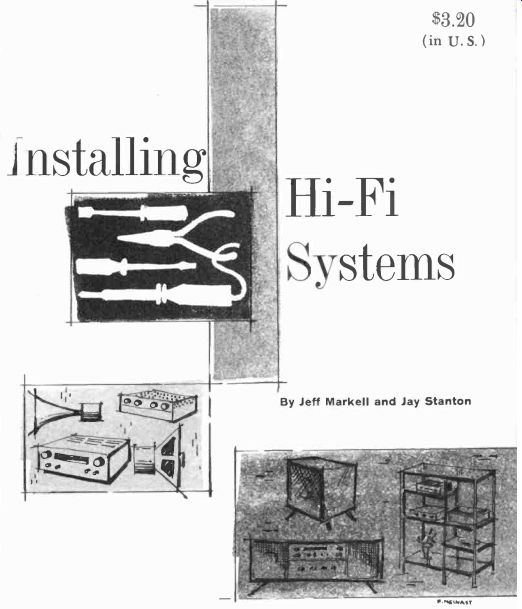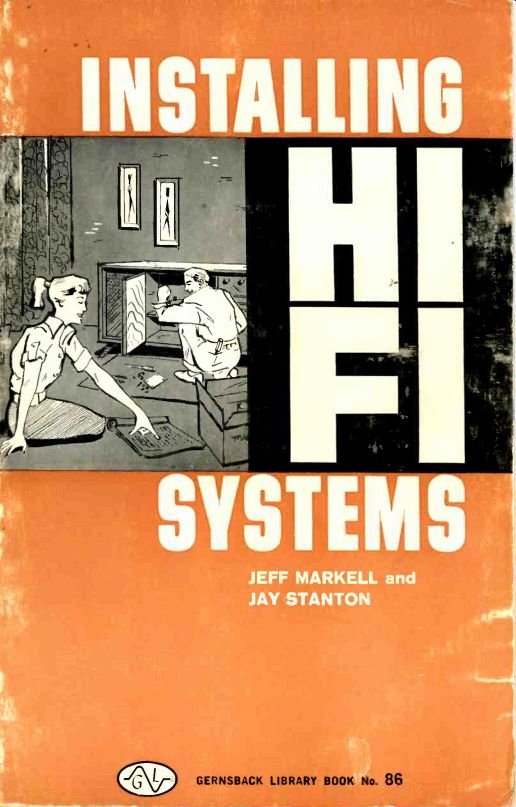
Contents
Monophonic sound reproduction systems. "Monaural" system. Achieving presence. Perspective and sound-source spatial distribution. Binaural reproduction. Stereophonic reproduction. Binaural system. Stereo installation problems. Other sonic perspective systems. Limitations. The installer and system types.
Esthetics of appearance. Understanding the client's tastes. Functionality. Flexibility for future modification. Types of modifications. Advance electronic provisions for modification. Advance cabinet provisions. Advance room provisions for modification. Explaining factors to the client. The installation decision.
Legal and insurance considerations
Government regulations. Federal tax requirements. Federal, State and Municipal taxes. Building electrical and health codes. Private dealings. Originating a business. Liability. Purchases. Avoiding law suits. Sales. Collection problems. Warranty. Liability and insurance.
High-fidelity system components
Components. System elements. Tuners for hi-fi systems. Am-Fm tuners. All-wave receivers. Television sound channels. Pickups and tone arms. Tone arms and turntables. Record changers. Tape recording and playback equipment. Preamplifiers. Power amplifiers. Reproducers.
Electrical and electronic interconnections
Power-line frequencies. Primary electric supplies. Power connections. Total power drain. Interconnection problems. Interconnecting transformerless receivers. Control adjustments. Remote stereo control unit. Cable and wire considerations. Using coaxial shielded wire. Speaker wiring requirements.
Environment and electronic equipment
Regional climatic conditions. Temperature effects. Acceptable temperature ranges for equipment. Effects of heat on components. Humidity effects. Vapor pressure. Climate. Using heater elements. Local ambient factors. Chemical corrosion problems. Using aerosol lacquer sprays. Tropicalization.
Eliminating sources of hum. Ground loops. Problems of shock hazard. Curing hiss problems. Excessive signal input. Man-made interference and external electrical noise. Using low-pass rf filters. Filter cutoff frequency. Electronic and acoustic feedback.
Speakers. Speaker enclosures. Infinite baffle. Reflex baffle. Horns. Room acoustics. Speaker placement. Reverberation time. Absorbency vs frequency. Optimum reverberation time. Sound transmission. Dif fraction. Reflection. Echo. Standing waves. Sound transmission in solids. Direct conduction. Structural resonance.
Room acoustics. Excessive reverberation. Room surfacing materials. Echoes and standing waves. Insufficient reverberation. Object resonances. Structural resonance. Sound leakage. Air transmission. Sound transmission through solids. Transmission by direct conduction. Enclosure and speaker factors. Speakers. Enclosures.
Elements of design. Static and dynamic lines. Regular and irregular shapes. Form. Proportion. Color. Design expressed in style. Functional differences. Importance of decorative detail. Specific styles. Modern. Contemporary. Traditional. French styles. English styles. American styles.
How does the room look? Locating the hi-fi. Optimum location for speakers. Style. Space limitations. Differences between built-in or free-standing units. Size. Shape and proportion. Color and texture. Appearance and functionality.
Construction of cabinets and built-in furniture
The installer's point of view. Style and construction. New materials and methods. Plywood or solid lumber. Basic types of plywood construction. Plywood grades. Face veneers. Wood species. Plastic surfacing materials. Hardware. Other materials. Joints. Fastenings. Finishing.
Preparing cabinets for installation
Equipment cabinets. Speaker cabinets. Repairs. Hardware. Loose or open joints. Loose legs. Other structural defects. Finish retouching. Scratches. Depression injuries. Burning-in. French polish. Burns. Cracked, crazed or alligatored finish. Stains. Refinishing.
Basic construction. Materials and methods used in building. Wood frame. Plank and beam construction. Masonry construction. Steel frame. Reinforced concrete. Typical construction details. Basic types of windows. Doors. Interior wood frame and masonry partitions.
This guide is based on the 1960 Gernsback book:

Introduction:
NEVER before in the history of the musical art has it been possible for so great a listening audience to enjoy the riches of the world's musical literature. Through the medium of recording and reproduction, this availability extends also to spoken drama, to poetry and, indeed, to all of the accumulated art and wisdom of mankind that can be expressed in sound. Today, within a range of cost that excludes practically no one, this whole area of human culture can be enjoyed in the privacy and comfort of the home, in public forums and gathering places, and even in moving vehicles.
More and more people have come to realize that money spent for high-fidelity equipment continues to yield a return in pleasure and satisfaction long after the cost has been forgotten. Indeed, it is difficult to think of any other item in the average home that continues to please as much after the initial "newness" has worn off.
In view of this, it hardly seems necessary to stress the importance of a good, well-thought-out installation in achieving the over all satisfaction that even a modest high-fidelity system can give.
Yet the writers' experience over the years indicates that many buyers and users of hi-fi are getting less satisfaction than their equipment can provide, simply because the fundamentals of good installation were not understood or were ignored in favor of economy or visual decor. This book was written to make available in a single source the fundamentals of hi-fi installation, in a form neither too difficult for the nontechnical nor too superficial for the professional. We believe the information given will be applicable to the overwhelming majority of installation problems, although, of course, it is not meant to replace a textbook on acoustic engineering.
Thoughtfully applied, the information given here can prevent costly errors in installation and even in the buying of equipment for a specific application. Indeed, it is likely that, in many existing installations, some modification of the installation along the principles presented here will probably result in a performance improvement worth a good deal more than the modest cost of this book. It is with this hope that we offer this result of our combined experience in the fascinating field of sound reproduction.
-- JEFF MARKELL; JAY STANTON
Also see:
Designing and Building Hi-Fi Furniture (1959)